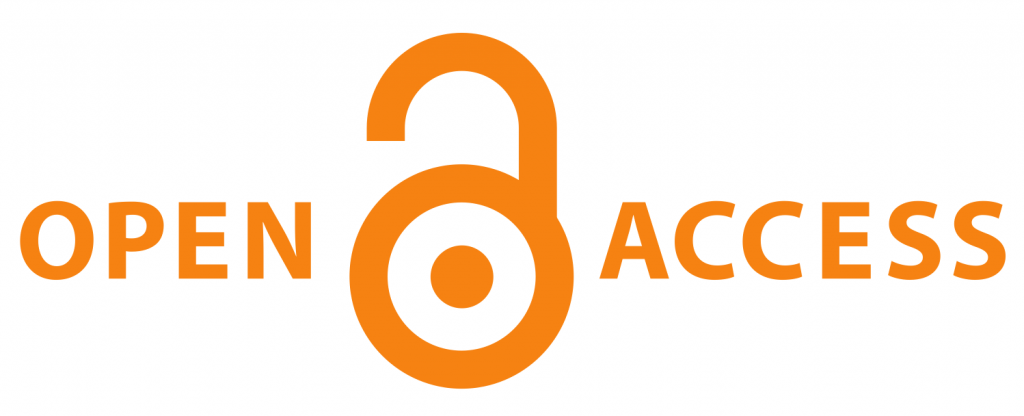Research Articles
Compilation Articles
Issue Editorial Board



 0000-0002-6156-5027
0000-0002-6156-5027



Aim & Scope
Purpose
The aim of Journal of Selcuk Communication is to contribute to science by publishing high quality publications of scientific importance. For this purpose, original research articles and reviews related to communication are published. It is an independent, double-blind peer-reviewed, open-access and online journal that aims to publish articles produced in communication-related fields, especially in integrated marketing communication, advertising, public relations, journalism, radio and television, cinema, social media, digital communication studies, health communication and political communication. Articles should describe original data that have not been previously published or submitted for publication elsewhere.
Scope
Publication ContentJournal of Selcuk Communication, the academic publication of Selçuk University Faculty of Communication, contains original scientific publications.
Manuscripts that are deemed suitable for the submission rules Journal of Selcuk Communication and the scope of the journal are sent to at least two referees who are experts in their fields for scientific evaluation. The final decision for all submitted manuscripts belongs to the Editor of Journal of Selcuk Communication.
Journal of Selcuk Communication, the academic publication of Selçuk University Faculty of Communication, is published two (2) times a year in April and October.
The manuscripts submitted to Journal of Selcuk Communication are pre-evaluated by the editorial board and published after the positive reports of at least two referees. The acceptance dates and publication dates of the articles are as follows:
APRIL ISSUE: April 15 - May 15
OCTOBER ISSUE: October 15 - November 15
Subject Category:
Field of Science: Communication
Keywords: Integrated marketing communication, advertising, public relations, journalism, radio and television, cinema, social media, digital communication, health communication, political communication.
Article Submissions
Submitted articles must align with the journal's purpose and scope. Original, unpublished, and not concurrently under evaluation in another journal, articles approved by each author for content and submission are eligible for evaluation.
Readership
The target audience includes professionals, academics, experts, researchers, as well as specialization and doctoral students in all fields of communication. Additionally, students engaged in studies related to this field are part of the intended readership.
Originality of Articles
Journal of Selcuk Communication does not accept previously published works.
Author Guidelines
WRITING RULES
1. All manuscripts submitted to our journal for review should be based on a sample article template (click here to download the template). After downloading the template, the texts should be adapted to the relevant parts of the template without making any changes to the template. The manuscripts that do not conform to the template/are not prepared using the template will be returned to the author(s) without being evaluated.Other issues to be considered are as follows:
• The manuscripts submitted to Selçuk Journal of Communication should be prepared in A4 size, using MS Office Word program, leaving 2.5 cm margins from the right, left, top and bottom edges, in normal writing style, Calibri font, first 0nk then 6nk, leaving 1.25 indent on the first line, 1.5 line spacing and justified.
The name and surname of the author(s) should be written in Calibri 16 pt, normal and left justified.
• Abstract and Abstract headings should be written in Calibri 12-point font and normal font style.
• Extended Abstract, Introduction, Conclusion, References and all other main headings should be left justified, all capitalized, 14 point, 0 indented and bold. In the second level subheadings, only the first letter of the words should be capitalized, left justified, 14 font size, 1.25 indent in the first line and bold.
• Turkish and English abstracts should be in 11-point font size and normal. Turkish and English keywords should be written in 11-point font with the first letter capitalized.
• Studies should generally follow the flow of Turkish Title, Abstract, Keywords, English Title, Abstract, Keywords, Introduction, Main Text, Conclusion, Extended Abstract and References.
• The manuscripts should be at least 5000 and at most 9000 words, including extended abstracts.
• Each manuscript should include a Turkish and English abstract of at least 150 and at most 250 words, and Keywords should consist of at least 5 and at most 7 words. Abstracts should be in English for studies prepared in Turkish and in Turkish for studies prepared in English. The abstract should briefly include the purpose, scope, problem, method, population/sample group, and major findings and conclusions of the study.
• The extended abstract should be written in English for studies written in Turkish and in Turkish for studies written in English. The Extended Abstract should consist of at least 750 and at most 1500 words and should be written in 12-point font. The abstract should be a holistic text that includes the purpose, scope, theoretical framework, methodology, findings and results of the study and should include all relevant parts of the study. The Extended Abstract should be placed at the end of each study, just before the References section, and the study should be uploaded to the system as a single MS Word file. Different formats are not accepted.
2. For referencing, the 7th edition of APA (American Psychological Association), which is the reference citation method for the text, should be used. In both citations and bibliography, authors should follow the spelling rules and format specified in the Publication Manual of the American Psychological Association published by the American Psychological Association. In this regard, the guide named "APA-7-Writing-Rules-and-Citation" should be used.
3. The references in the studies submitted to our journal must be created with the reference management tool in MS Office Word. Manually created references and bibliographies are not accepted.
4. In studies requiring ethics committee permission, information about the permission (name of the committee, date and number) should be included in the method section, as well as on the last page of the article; in case reports, information on the signing of the informed consent form should be included in the article.
5. If the study is derived from a thesis, if it was presented in a scientific meeting (congress, symposium, conference, etc.), if it was supported by a funding organization (information about the funding organization, project number, etc.), it should be reported as a footnote on the first page of the article.
6. Contributors to the study, if any, should be mentioned in the acknowledgments section.
7. Research data should be uploaded to TUBITAK's Aperta Portal.
8. All legal responsibility for the content of the studies belongs to the author(s).
9. The spelling and punctuation of the studies should be based on the Turkish Language Association Spelling Guide.
10. MORE THAN ONE article of the author(s) cannot be published in one issue.
PUBLICATION RULES
1. Selçuk Journal of Communication, which started its publication life in 1999, is a scientific refereed journal published 2 (two) times a year in April and October by Selçuk University Faculty of Communication.2. Each volume of Selçuk Journal of Communication consists of 2 issues published in April and October. In addition, additional issues or special issues can be added to the relevant volume if the editor and editorial board deems appropriate.
3. Selçuk Journal of Communication is written in Turkish and English.
4. The other files that authors should upload to the system together with their manuscripts are as follows:
• Copyright notice text signed by all authors,
• Contribution rate and conflict of interest statement signed by all authors,
• Ethics committee permission for studies where the research object is human (field research, in-depth interviews, etc.),
• Copyright responsibility form declaring that there is no content that violates copyrights in the studies.
5. Selçuk Journal of Communication includes qualified and original studies prepared in accordance with academic standards in communication sciences and sub-disciplines.
6. The academic evaluation process can be carried out if the author(s) who submitted an article in one call of our journal can only apply with a publication in a foreign language in the next call. (An author who submitted an article in the October call can only apply with a foreign language article in the April call).
7. In each publication call period, only one work of the authors is included in the scope of evaluation. In case of multiple submissions, only one work is included in the evaluation process. This condition applies to both single-authored and multi-authored studies. There are no exceptions to this condition.
8. The works submitted to Selçuk Journal of Communication for publication must not have been submitted to any other journal or published in any medium before. In our journal, only articles produced from doctoral dissertations are evaluated in a limited number. (Studies produced from doctoral dissertations whose referee evaluation process is completed are placed in the publication queue and published in the following issues).
9. Full texts of papers presented at scientific meetings (congresses, symposiums, etc.) can be sent to our journal, provided that they have not been published digitally or in print and have been converted into article format / content.
10. The number of studies to be published in each issue is determined and limited by the editorial board. The number of articles from which type of research to be published in each issue is under the authority of the editorial board. For this reason, studies that are accepted as a result of the refereeing process are queued and put on hold for the following issues. Studies uploaded in a foreign language are prioritized regardless of the date of upload and acceptance. No commitment is made as to which issue the accepted manuscripts will be published.
11. Submission of articles to Selçuk Journal of Communication is only possible through the DergiPark system. In order to submit an article to the journal, you must have a DergiPark user account and ORCID ID number.
12. The main title of the manuscripts submitted to Selçuk Journal of Communication should not include brand names, institution names and phrases related to the objects of study (such as XX Brand Example, XX Institution Example, XX Movie Example, XX Advertisement Example).
13. All manuscripts submitted to Selçuk Journal of Communication are checked for originality both before they are evaluated by the editorial board and after the referee evaluation process is completed and the manuscript is included in the publication process.
14. The upper limit of the acceptable similarity rate for works submitted to Selçuk Journal of Communication is 15%. Studies exceeding this limit will be rejected without evaluation. For this reason, authors should determine the similarity rate before submitting their work to our journal. Since similarity programs work according to certain parameters, if there is a difference between the similarity rate of the author and the similarity rate of the editorial board of Selçuk Journal of Communication, the rate of Selçuk Journal of Communication will be taken as the basis. Authors who make a similarity check before uploading to the relevant call of the journal should select the "no repository" option. Otherwise, the similarity rate of the work will be displayed as 100% in the editorial control and the work will not be evaluated.
15. Transactions sent to Selçuk Communication Journal are first evaluated in advance and then sent to the field management. Articles that are not deemed appropriate during the period of the field setup are rejected.
16. Since the manuscripts for which revisions are requested during the refereeing process are re-submitted to the referee review regardless of the type of revision (minor/major), all corrections requested in the manuscripts should be marked in red and uploaded. For manuscripts that are not uploaded in this way, the peer review will be terminated and the manuscript will be returned to the author.
17. If the authors use the referee note panel as a personal communication tool or use it in a way that reveals their anonymized identities, their evaluated works will be rejected on the grounds of ethical violation and they will be prevented from uploading their work to any call of Selçuk Journal of Communication.
Ethical Principles and Publication Policy
Legislation
Journal of Selcuk Communication adheres to national and international standards regarding research and publication ethics. It complies with the Press Law (a), Law on Intellectual and Artistic Works (b), Scientific Research and Publication Ethics Directive for Higher Education Institutions (c), and Principles of Transparency and Best Practice in Scholarly Publishing (d). It has also adopted published by the Committee on Publication Ethics (COPE), Directory of Open Access Journals (DOAJ) and Open Access Scholarly Publishers Association (OASPA).
Publication Ethics Principles
Ethics Committee Permission
For research in all disciplines that require ethics committee approval, an ethics committee decision must be obtained and information regarding the decision must be stated in the manuscript text. Our journal does not evaluate studies that do not have an ethics committee decision.In studies requiring ethics committee approval, information about the permission (name of the committee, date and number) should be included in the text of the article. In case reports, information on the signature of the informed consent form should be included in the article.
In line with the decisions taken by Ulakbim TR Index, Ethics Committee Permission is required for studies to be published since 2020.
Research Requiring Ethics Committee Authorization
All kinds of research conducted with qualitative or quantitative approaches that require data collection from participants using survey, interview, focus group, observation, experiment, interview techniques,
Use of humans and animals (including materials/data) for experimental or other scientific purposes,
Clinical trials in humans,
Research on animals,
Retrospective studies in accordance with the law on the protection of personal data.
Also;
Indication of compliance with copyright regulations for the intellectual and artistic works used
Obtaining and indicating permission from the owners for the use of scales, questionnaires, photographs belonging to others,
In case presentations, it should be stated that the “Informed Consent Form” has been obtained.
Protection of Human, Animal and Environmental Rights
• All research on humans should be conducted according to the principles of the Declaration of Helsinki (World Medical Association (WMA) Helsinki Declaration for Medical Research in Human Subjects).• Informed consent must be obtained for clinical research on humans or samples obtained from humans and must be stated on the first page of the article. For research with human volunteers, a written informed consent form prepared in accordance with the research protocol must be obtained. The consent of the legal guardian of children and those under guardianship or those with confirmed mental illness must be obtained.
• Confidentiality of information provided by research participants and confidentiality of respondents must be ensured. The research must be designed to protect the autonomy and dignity of participants. The research must be planned in a way that does not put participants at risk.
• All experiments involving animals must comply with ARRIVE and ICLAS guidelines and be approved by the ethics committee.
• Authors must provide information on the ethical treatment of animals as well as measures taken to prevent pain and suffering.
• Studies involving plants must comply with the IUCN Policy Statement on Research Involving Endangered Species and the Convention on Trade in Endangered Species of Wild Fauna and Flora.
• Experimental research and field work on plants and the collection of plant material must comply with relevant institutional, national and international norms and legislation.
• A statement indicating any permissions and/or licenses required for the extraction of plant or seed samples should be included in articles.
Protection of Personal Data
All personal data sent to our journal are protected under the Personal Data Protection Law. The data belonging to the Author, Referee and other real persons are not shared with third parties and institutions.Republishing and submitting the same work to more than one journal
The submission of identical or substantially similar articles by authors to more than one journal is considered an ethical violation by our journal. When this situation is detected by our journal, the article will be returned to the author and the author's articles will be embargoed for a period to be determined by the editor.Plagiarism Action Plan and Journal's Measures
Our journal scans all submitted articles for plagiarism. The plagiarism status of the papers submitted to the journal is examined using ITHENTICATE software. The similarity rate is expected to be less than 15%. Manuscripts exceeding this rate are rejected without being included in the refereeing process. If necessary, the editors may subject the article to plagiarism check at various stages of the evaluation process.The journal attaches great importance to intellectual property rights and aims to support and protect the original work of authors. Plagiarism is considered an act contrary to research ethics and innovation standards. Therefore, all authors submitting manuscripts to the journal are expected to fully comply with the code of ethics and refrain from any act of plagiarism.
When plagiarism is suspected in an article, it is first reviewed by the editors of our journal. As a result of the review, our journal contacts the author and requests an explanation within two weeks. If no response is received within the specified period, the journal contacts the university to which the author is affiliated and requests an official investigation.
In cases where plagiarism is detected, our journal follows the following steps:
Notify the university to which the author is affiliated and cooperate to initiate official action.
The PDF copy of the relevant article is removed from the journal's website and links to the article are deactivated. In addition, the phrase “Plagiarized Article” is added to the article title.
The account of the author responsible for the violation will be closed and the author will be prevented from making any submissions to the journal for 3 years.
Correction, Retraction, Expression of Concern
Editors may issue a correction if minor errors are identified in published articles that do not change the findings, interpretations and conclusions. Editors may consider retracting the manuscript if errors/omissions are found that are major enough to change the findings and conclusions. Editors should consider issuing a statement of concern if there is evidence of research or publication misconduct by the authors; if there is evidence that the findings are unreliable and that the authors' institutions have not investigated the incident; or if the potential investigation seems unfair or inconclusive. Correction, retraction or expression of concern will follow COPE guidelines.Conflicts of Interest
1. Authors must declare any (institutional, financial, personal and academic) conflict of interest at the time of submission.2. Referees should inform the journal editor and withdraw from the manuscript process in case of any (institutional, financial, personal and academic) conflict of interest that prevents them from evaluating the manuscript.
3. In order to prevent conflicts of interest in the article evaluation process, our journal pays attention to the fact that referees and authors do not work in the same institution.
4. In order to prevent conflicts of interest in the evaluation process of the articles sent to our journal by our board members (Editor, Editorial board member, etc.), the roles of the authors in our journal are suspended until the process of the relevant article is completed and they are not allowed to see the process.
5. The editors of our journal do not take part in decisions regarding articles written by themselves or their family members.
Ethical Violation Notifications
Readers can send an e-mail to iletisimdergi@selcuk.edu.tr if they notice any errors, inaccuracies, plagiarism, misconduct or duplicate articles in the published articles.The editors of our journal carefully review the notifications made and take the necessary actions within the scope of COPE principles. Click here to access the relevant COPE guidelines.
Complaints and Appeals to our Journal
You can send your complaints and objections about the content, procedures or policies under the responsibility of our journal or the board members of our journal boards by e-mail to iletisimdergi@selcuk.edu.tr.Complaints and objections submitted to our journal are carefully reviewed and evaluated within the scope of COPE principles. Click here to access the relevant COPE principle.
Other Actions Contrary to Scientific Research and Publication Ethics
Higher Education Institutions Scientific Research and Publication Ethics Directive (Click here to access the Directive)Article 4 - (1) Acts against scientific research and publication ethics are as follows
a) Plagiarism: Presenting the original ideas, methods, data or works of others as one's own work in whole or in part without citation in accordance with scientific rules,
b) Forgery: Using non-existent or falsified data in scientific research,
c) Distortion: Falsifying research records or data obtained, falsifying devices or materials not used in the research, falsifying or shaping the results of the research in line with the interests of the persons and organizations receiving support,
ç) Republishing: Presenting duplicate publications as separate publications for academic appointments and promotions,
d) Slicing: Dividing the results of a research into parts in a way that disrupts the integrity of the research and inappropriately and publishing them in more than one number and presenting these publications as separate publications in academic appointments and promotions,
e) Unfair authorship: Including or excluding people who have not made active contributions, changing the order of authors in an unjustified and inappropriate manner, removing the names of those who have made active contributions from the work in subsequent editions, using one's influence to have one's name included among the authors even though one has not made active contributions,
(2) Other types of ethical violations are as follows
a) Failing to specify the persons, institutions or organizations providing support and their contributions in the publications made as a result of the researches conducted with support,
b) Using theses or studies that have not yet been submitted or defended and accepted as a source without the permission of the owner,
c) Failure to comply with ethical rules in research on humans and animals, and failure to respect patient rights in publications,
ç) Violating the provisions of the relevant legislation in human biomedical research and other clinical research,
d) Sharing the information contained in a work that he/she has been assigned to examine with others before publication without the express permission of the author,
e) To misuse the resources, spaces, facilities and devices provided or allocated for scientific research,
f) Making baseless, unwarranted and intentional allegations of ethical violations,
g) Publishing data obtained in surveys and attitude surveys conducted within the scope of a scientific study without obtaining the explicit consent of the participants or, if the research is to be conducted in an institution, without obtaining the permission of the institution,
h) To harm animal health and ecological balance in research and experiments,
ı) Failure to obtain the necessary permissions in writing from the authorized units in research and experiments before starting the studies.
i) Conducting research and experiments contrary to the provisions of the legislation or international conventions to which Turkey is a party regarding the relevant research and experiments.
j) Failure by researchers and authorities to comply with the obligation to inform and warn those concerned about possible harmful practices related to the scientific research conducted,
k) Not using the data and information obtained from other persons and institutions in scientific studies to the extent and in the manner permitted, not respecting the confidentiality of this information and not ensuring its protection,
l) Making false or misleading statements regarding scientific research and publications in academic appointments and promotions,
Responsibilities of Stakeholders
1-Publisher's Responsibilities
Integrity and Impartiality• Articles submitted for publication should be evaluated according to academic and scholarly criteria. To ensure that the article evaluation process is carried out regardless of the differences of the authors (gender, religion, race, political opinion, etc.).
Confidentiality
• To ensure that all personal data sent to the journal are protected and not shared with third parties and institutions.
Editorial Structure
• Appointment of editors and editorial board members and ensuring that their information is shared transparently on the website.
Independence of Editors
• All decisions made by the editors working in the journal are independent from the publisher. The relationship between editors and publishers is based on the principle of editorial independence.
Ensuring Ethical Principles
• Ensuring that peer review processes are transparent and fair.
• Taking necessary measures to prevent conflict of interest and ethical violations.
Management of Publication Processes
• Supervising article evaluation and refereeing processes.
• To ensure that the published issues are prepared correctly in terms of format and content.
Responsibilities Regarding Published Articles
• To protect the copyright and other rights of published articles on behalf of the journal and authors, to keep a record of each unpublished article.
2-Responsibilities of Editors
Managing the Publication Process• To check whether the submitted articles are suitable for the purpose and scope of the journal.
• Ensuring that articles are directed to appropriate referees and supervising the refereeing process.
Referee Evaluation Process
• Ensuring that peer review processes are carried out in a transparent, fair and objective manner.
• Preventing conflicts of interest and controlling ethical violations.
Protection of Ethical Principles
• Identifying and resolving ethical issues.
• Reviewing papers or using software to prevent ethical violations such as plagiarism and scientific fraud.
Ensuring Scientific Quality
• Working to improve the scientific quality of the content published by the journal.
• Ensuring that language and grammar corrections are made in articles.
Editorial Team Management
• Organizing team members working in journal boards.
• Planning the division of labor and distribution of tasks in editorial processes.
Communication and Transparency
• Communicate effectively with authors, reviewers and editorial board members.
• Ensure that policies regarding the refereeing process and other editorial processes are clearly stated on the website.
NOTE: Editors observe the principles of impartiality, transparency and scientific ethics while fulfilling these duties.
3-Responsibilities of Authors
Presenting Original Research• Ensure that the research presented in the article is original and makes a scientific contribution.
• To work ethically, avoiding plagiarism, data manipulation or falsification.
Compliance with Ethical Rules
• To comply with ethical principles while conducting and presenting the research.
• Obtain the necessary ethics committee approval for studies involving human or animal subjects and include this information in the manuscript.
• Declare that there are no conflicts of interest and clearly state the sources of funding, if any.
Accurate and Transparent Data Presentation
• Report research findings in a complete, accurate and transparent manner.
• Provide detailed information to ensure reproducibility of the methods, analyses and results used.
Compliance with Writing Rules
• To prepare articles in accordance with the journal's writing rules and technical requirements.
• Providing content appropriate to the scope and subject area targeted by the journal.
Following the Article Process
• To make revisions if necessary, taking into account the suggestions of reviewers and editors.
• To make the necessary arrangements on time by complying with the deadline specified in the evaluation process.
Determining the Correct Author List
• Limiting the list of authors to those who actually contributed to the study.
• Determining the author ranking in accordance with their contribution rates.
• Correctly identify the corresponding author and keep their contact information up to date.
Declaring Conflict of Interest
• Clearly indicate any potential conflicts of interest in the research or publication process.
• If the article has been financially supported, declare this.
Referencing Published Work
• Providing accurate references for all information and findings used in the study.
• Referring to previous studies with relevant and accurate citations in the bibliography section.
Avoiding Repeated Publication
• Not submitting the same article to more than one journal.
• Not copying and re-presenting a previously published work.
Cooperation in case of subsequent correction
• If a significant error or omission is noticed in the study after publication, to notify the editor immediately and to publish a correction if necessary.
4-Responsibilities of Referees
Scientific Evaluation• To evaluate the scientific value, originality and contribution of the articles in the field.
• To examine in detail the purpose, methods, results and discussion of the study.
• To check the accuracy and reliability of the hypotheses, findings and conclusions in the article.
Ethical Control
• To detect ethical violations such as plagiarism, data manipulation, conflicts of interest in articles.
• To evaluate whether the research is conducted in accordance with ethical rules.
Commitment to the Refereeing Process
• Maintaining confidentiality with submitted articles.
• To evaluate the studies in his/her field in an impartial and objective manner.
• To complete the evaluation within the specified timeframe.
Feedback to Improve Article Quality
• Provide constructive and detailed feedback on the content of the manuscript.
• If necessary, making suggestions to present the study in a more understandable and scientific format.
Being Objective and Impartial
• To avoid personal opinions and prejudices in the evaluation process.
• Declare that there is no conflict of interest or affiliation with the author(s)
Compliance with the Principles of the Refereeing System
• To act in accordance with the refereeing system determined by the journal.
• To adhere to the journal's policy regarding the refereeing process.
JOURNAL PUBLICATION POLICIES
General Principles
• Submitted manuscripts must be appropriate to the purpose and scope of the journal and must comply with the rules on the journal website.• Manuscripts submitted for publication should not have been previously published, accepted for publication elsewhere or under evaluation.
• Our journal accepts manuscripts in Turkish and English.
• Our journal publishes original research articles and reviews.
• For research in all disciplines that require ethics committee permission, an ethics committee decision must be obtained and information regarding the decision must be stated in the text of the article. Our journal does not evaluate studies that do not have an ethics committee decision.
• Multiple article applications of the same author will not be accepted in the same period.
Article Evaluation Process
• The referee processes of the articles submitted to our journal are carried out within the scope of double blind refereeing.• Submitted manuscripts are reviewed by the editor for compliance with the journal's editorial principles, academic writing rules and APA 7 Citation System, and are scanned for plagiarism using ITHENTICATE software. The similarity rate is expected to be less than 15%. Manuscripts exceeding this rate are rejected without being included in the refereeing process.
• After the Preliminary Review and Plagiarism Scanning, the appropriate studies are reviewed by the field editor and then forwarded to at least two expert referees within the scope of double blind review. If one of the two reviewers responds negatively, the manuscript is sent to a third reviewer. In order for the manuscripts submitted to our journal to be published, at least two referees must make a publishable decision.
• In articles evaluated within the scope of double blind review, the process is carried out in confidentiality. The information of referees and authors is kept confidential.
• In cases where the referees request a correction, the relevant referee evaluations are sent to the author and a correction is requested. The corrected text is first checked by the field editor and then by the referee(s).
• The manuscripts that pass the referee process are reviewed by the Language Editors and, if necessary, the author is asked to make corrections. The corrected text is checked by the language editors.
• The manuscripts that are decided to be published are made ready for publication by typesetting and layout.
• After the typesetting and layout processes are completed, the article is published in the journal.
NOTE: Click here for detailed information about the Article Evaluation Process.
Special Issue Publication Policy
A special issue may be published in our journal once a year upon the request of the Editorial Board. Manuscripts submitted for the special issue are first subjected to a preliminary editorial review, examined for compliance with the spelling rules and similarity scanning for plagiarism assessment. After these stages are evaluated, the articles are taken into the peer review process using the double blind model. Articles that have completed the referee process are published after the completion of processes such as language control, typesetting and layout, just like other articles published in our journal. Articles submitted to our journal as a special issue must comply with the ethical principles and policies of our journal.Copyright Policy
The authors own the copyright of their works published in our journal and their works are licensed under Creative Commons Attribution-NonCommercial 4.0 International (CC BY-NC 4.0).NOTE: Click here for detailed information about the Copyright Policy of our journal.
Open Access Policy
Articles published in our journal are published as open access under the Creative Commons Attribution-NonCommercial 4.0 International (CC BY-NC 4.0) license. The full text of all published articles can be accessed by anyone via instant open access viewing at https://dergipark.org.tr/en/pub/josc/archive.NOTE: Click here for detailed information about the Open Access Policy of our journal.
Archive Policy
Articles published in our journal are digitally archived in LOCKSS. The full texts of all published articles can be accessed by anyone via instant open access viewing at https://dergipark.org.tr/en/pub/josc/archive.NOTE: Click here for detailed information about the Archive Policy of our journal.
Price Policy
Our journal is an open access journal, no fee is charged for the journal. No processing or submission fee is charged for articles submitted to the journal or accepted for publication. Our journal does not accept sponsorship and advertising in accordance with its publication policies. All expenses of our journal are covered by the publisher.NOTE: Click here for detailed information about the Fee Policy of our journal.
Price Policy
The publication of articles in the journal and the execution of article processes are not subject to any fee.
No processing or submission fee is charged for articles submitted to the journal or accepted for publication.
Selçuk Journal of Communication does not accept sponsorship and advertisement in accordance with its publication policies.
All expenses of Selçuk Journal of Communication are covered by Selçuk University.



